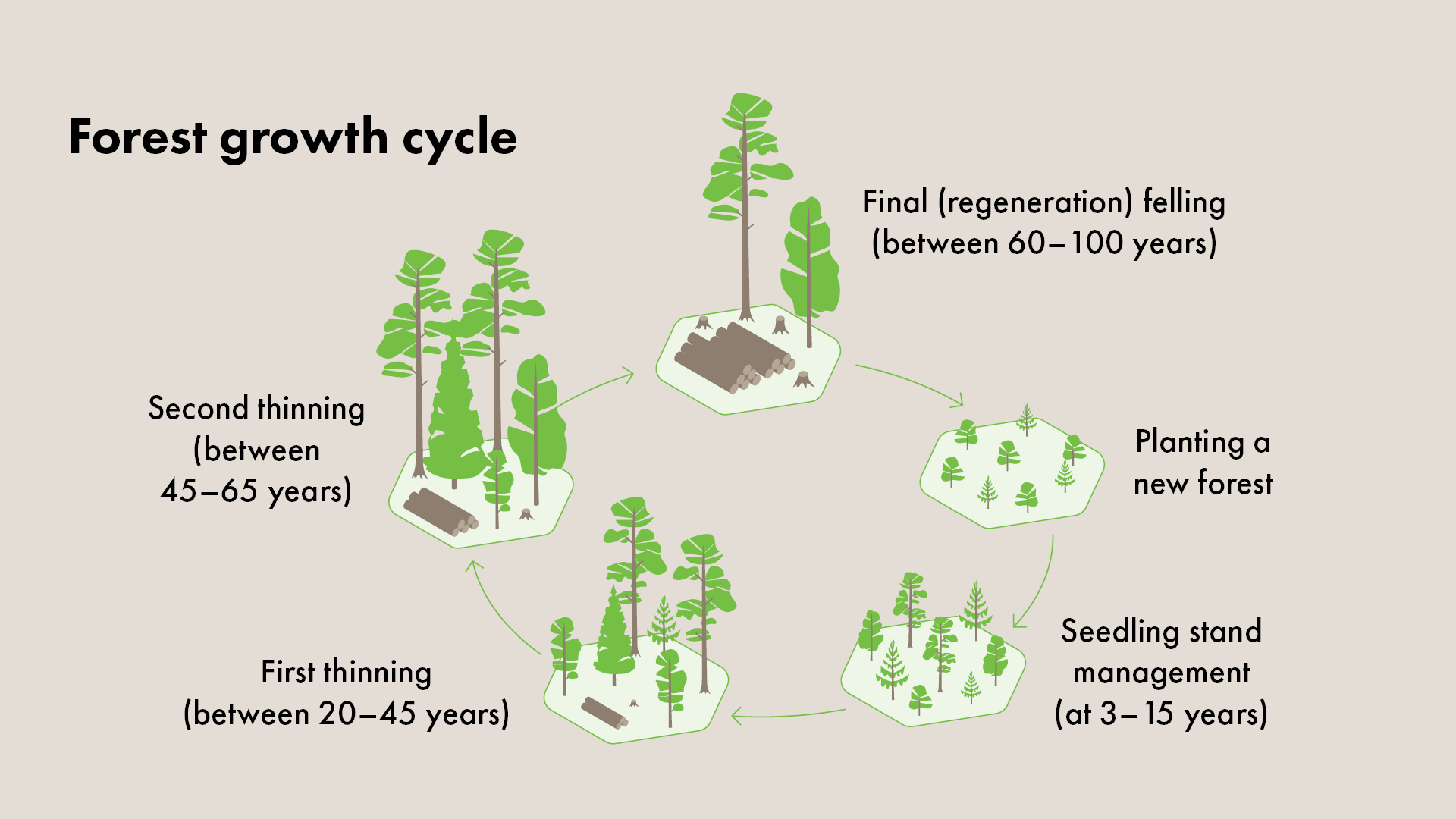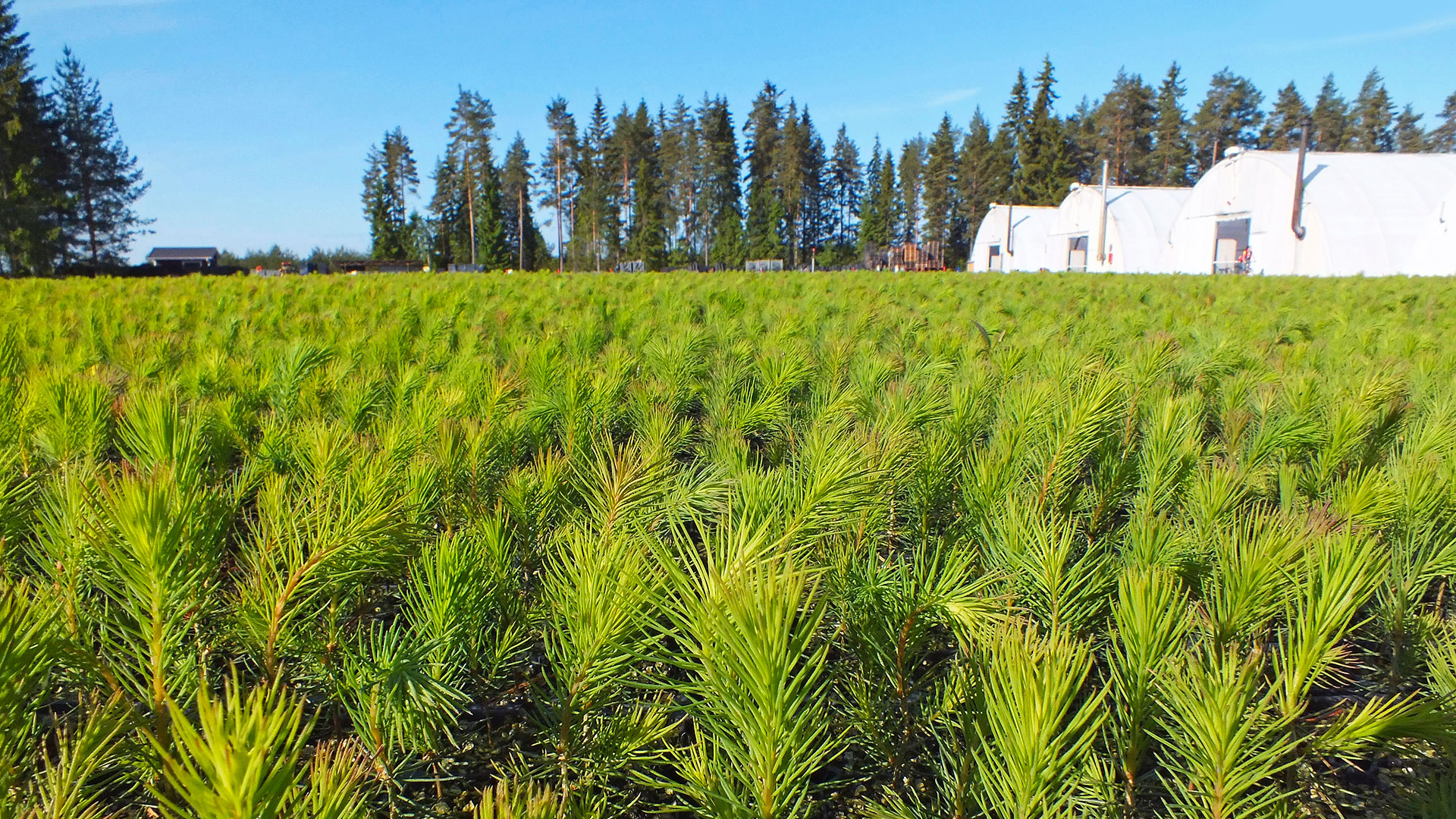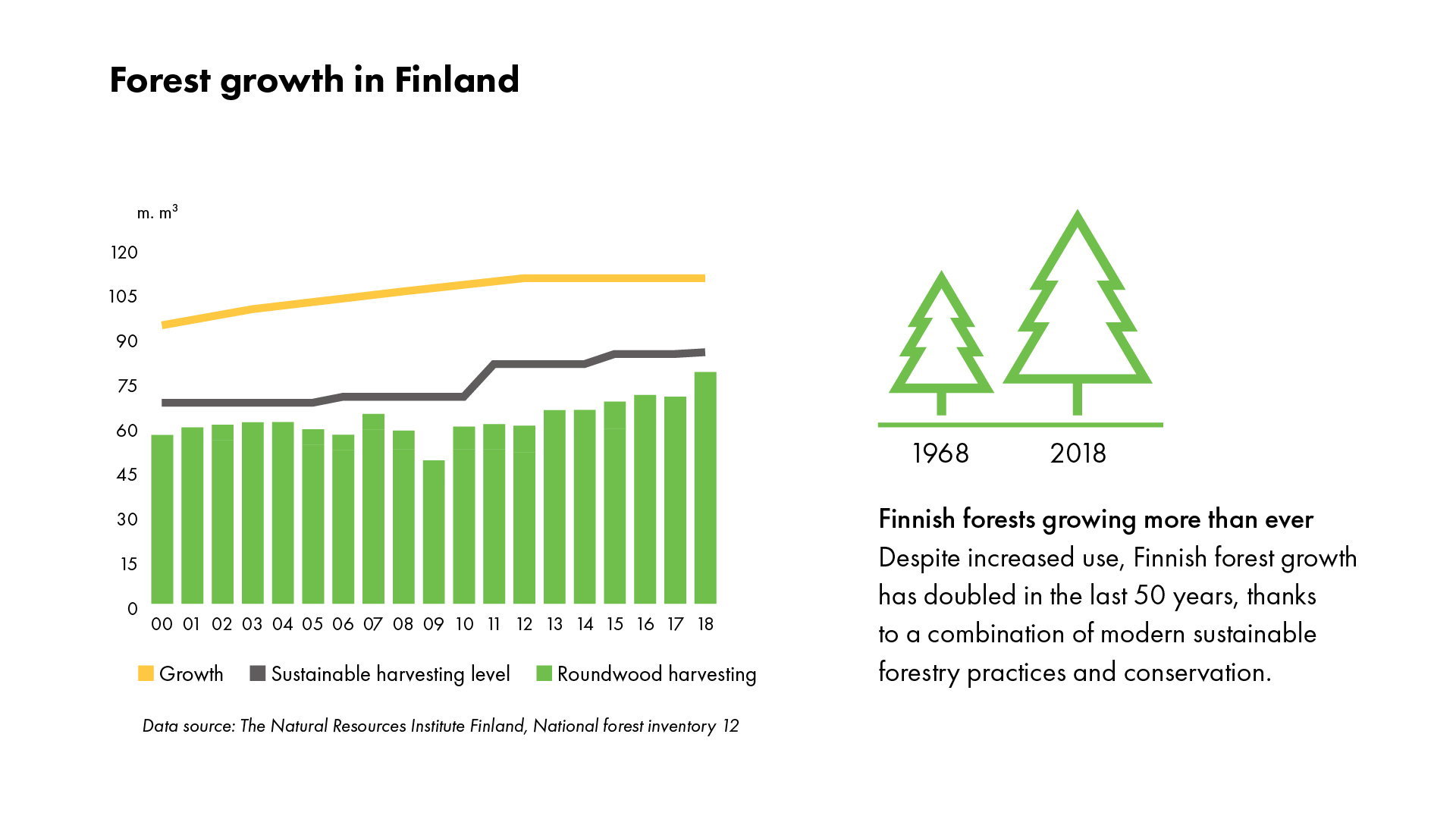Jue Wang, a Senior Environmental Specialist with UPM Specialty Papers, says that there is a false belief that using paper and pulp drive deforestation. The key element to commercial forestry is imitating how natural forests grow, she adds: “We analyse the differences and try to mimic them, such as increasing the share of broadleaf trees and leaving deadwood as a habitat for insects. This way, forests can be healthier and more resilient to the environment.”
Forest planning generally covers a period of ten years and defines the activity proposed for the area each year. “Through skilled management, the trees can better adapt to climate change and eventually produce a better quality of wood. It’s not about getting the most trees, but to obtain the healthiest forests in the long term,” says Wang,
So how does UPM ensure forest regeneration?

Planting a new forest
When a forest area is harvested, the forest is prepared for new growth. Seedlings are planted to start the growth of a new forest in the harvested area.
Good quality seedlings are essential for successful forest regeneration, which is why UPM has operated its own seedling nursery in Joroinen, Finland since the 1980s. The origin and quality of the seeds are the basis for seedling production, so UPM only uses domestic seeds and seedlings.
In addition to cultivating seedlings, large amounts of seeds are required in forest sowing. UPM obtains many of these from its own seed orchards, as well as purchasing them from other producers. Seeds are also collected from the highest-quality tree stands in the company’s own forests.

“Before planting a new forest, you must prepare the soil to improve seed germination and to secure the growing conditions for seedlings. And then during the final harvesting, experts will mark the rare trees that must be retained to help the next generation and to protect biodiversity,” explains Wang, adding that UPM plants 50 million trees a year, which is far more than it cuts.
Did you know that a single worker can plant up to 1,000 new seedlings a day?
Thinning improves health and resilience of trees
A commonly misunderstood element of the forest growth cycle is thinning, which reduces the number of trees by felling smaller and poorer quality ones. This enhances light conditions, increases the uptake of water and nutrients, and produces higher volumes of commercial wood from the remaining forest.
According to Finnish forestry, the first round of thinning occurs after 20-45 years and a second one follows 20-30 years later, depending on its development. Most of the wood that goes to making paper is obtained either through forest thinning or from sawmill residues – materials that would otherwise go unused. The final felling is used for timber and plywood.
Most of the wood that goes to making paper is obtained through forest thinning or from sawmill residues.
Finnish forests continue to grow
In Finland, where we source a large part of our wood supply, we have seen the concrete positive impact of modern, sustainable forest management methods. Over the past 50 years, forest growth in Finland has doubled despite the increased production of wood-based products and multiplied forest conservation network.
Finnish forests represent only 0.6% of global forests. Imagine if sustainable forestry practices were to become the standard in commercial forests everywhere!

Text: Asa Butcher
